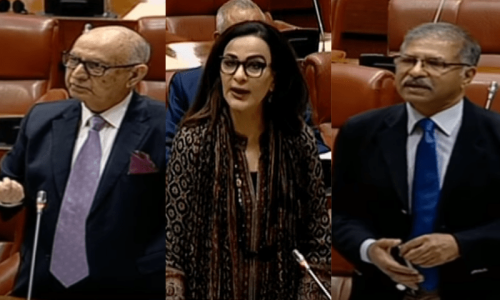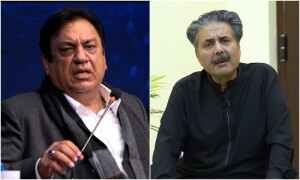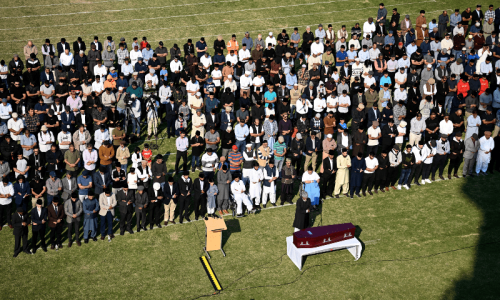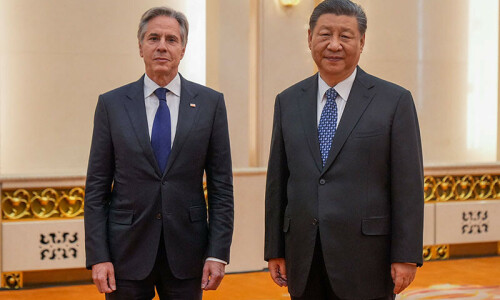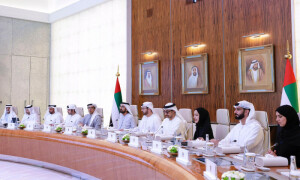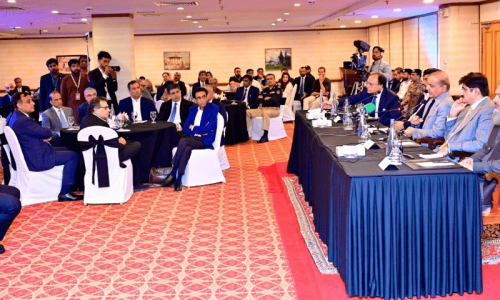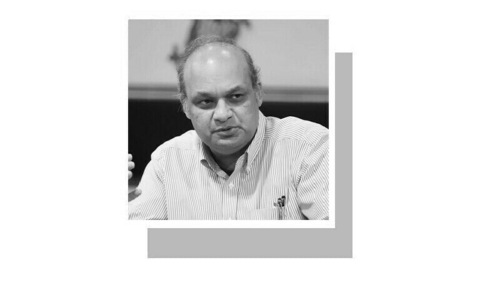‘We are adding to our nuclear arsenal to the point where it has become dangerous’

KARACHI: What are the perils of nuclear competition? Does amassing nuclear weapons add to the quality of stability in the region? Is there an alternative model of nuclear deterrence? These are some of the hard questions that need to be asked about Pakistan’s nuclear deterrence policy, said Sadia Tasleem, lecturer at the department of Defence and Strategic Studies, Quaid-i-Azam University, Islamabad.
She was speaking at a talk on ‘Contemporary security landscape and the perils of nuclear competition in South Asia — is there a way out for Pakistan?’ on Wednesday organised by the department of International Relations, University of Karachi.
Ms Tasleem in her presentation pointed towards changing trends in Pakistan’s nuclear deterrence posture. “Recent developments in Pakistan’s nuclear arsenal and missile capabilities indicate a shifting trend in its doctrinal thinking. Many in the west call Pakistan's nuclear arsenal the fastest growing This might be debatable. However, it is certainly one of the rapidly growing arsenals. Security policy-makers strongly feel that they cannot afford to cap Pakistan’s nuclear ability.” In other words, Pakistan is moving away from minimum credible deterrence posture to full-spectrum deterrence posture.
Explaining this further, she said: “Pakistan publicly adheres to minimum credible deterrence [No to a No First Use of nuclear weapons] to placate international forces. But through ISPR statements we know that Pakistan is diversifying its nuclear arsenal under full-spectrum deterrence. This means deployment becomes essential. Hence, tactical weapons such as Haft-IX with a range of 60kms have been developed and test-fired meant to deter Indian advances in Pakistani territory.”
In her opinion, this deterrence posture is problematic. Pakistan’s nuclear deterrence posture is constantly linked to India’s nuclear and military developments. “This means we cannot set a bar to our nuclear arsenal whereas India has two-faced threats in China and Pakistan.”
Another problem is Pakistan needs to have a large number of deployable tactical weapons placed at several places. “Pakistan has limited short-range missiles and it is important to have fully deployable capable readiness that means Pakistan needs to take out its weapons from wherever it is hiding in caves or tunnels and deploy them swiftly. The enemy can calculate the time gap and based on that calculation inflict damage.”
Nuclear competition versus arms race
She also said questions should be asked that nobody seemed to be asking. For instance, is Pakistan doing the right thing in its national security strategy? Can’t we do without Haft-IX? Will we be annihilated if we do so? Are we engaging in nuclear competition? Is it a folly to enter in such a nuclear competition?
Pakistan is moving towards nuclear competition and not an arms race. It is not the arms race seen during the Cold War years between the US and the Soviet Union. “They had a similar power symmetry and had the resources to engage in such an arms race. The power dynamics were similar between these two countries and they could follow each other.”
This is not the case between Pakistan and India due to asymmetric power dynamics. Consequently, they are developing and modernising their arsenal differently. “India is developing ballistic defence system and Pakistan is spending more on cruise missiles.”
Technology itself and the scientific community’s stake are the factors that are driving nuclear competition. “Since there is psychological pressure on the country to expand its nuclear programme, there is induction of more sophisticated weapons. Hence, technology becomes a driver behind competition.”
Currently doing research on Pakistan’s nuclear discourse heavily informed by literature during Cold War in US, Ms Tasleem said some American scholars and their theories were taught more at Pakistani universities and entrenched firmly in the minds of the scientists and policy-makers that they were unable to think of an alternative nuclear deterrence. These names included political scientist Kenneth Waltz and his work The Spread of Nuclear Weapons: More May Better and Herman Kahn and Thinking the Unthinkable.
She believed it to be an alarming situation. “We cannot seem to move out of the theories espoused by these scholars framed during the Cold War years in the US. We are adding to our nuclear arsenal to the point where it has become dangerous for us.”
Chinese concept of deterrence
She said it was dangerous due to the financial costs Pakistan was incurring while also facing internal security and other challenges. It was also perilous because of management issues. How will so many weapons be managed, she asked. It is also vulnerable to cyber attacks and Pakistan’s nuclear programme must be protected from cyber threats, she said.
Referring to the US and Soviet Union, she said that both the countries had amassed weapons but it did not increase the credibility of their nuclear deterrence. “They were constantly engaged in proxy wars and the Soviet Union eventually disintegrated. Hence, we need to think whether having more weapons will add to the quality of stability of the country.”
Ms Tasleem believed that the Chinese concept of deterrence was excellent. “During the height of the Cold War, China was facing external threat by Soviet Union and the US, and it had a modest arsenal at the time. China has understood that deterrence is primarily a psychological means to deter attack,” she said.
Published in Dawn, January 29th, 2015
On a mobile phone? Get the Dawn Mobile App: Apple Store | Google Play


